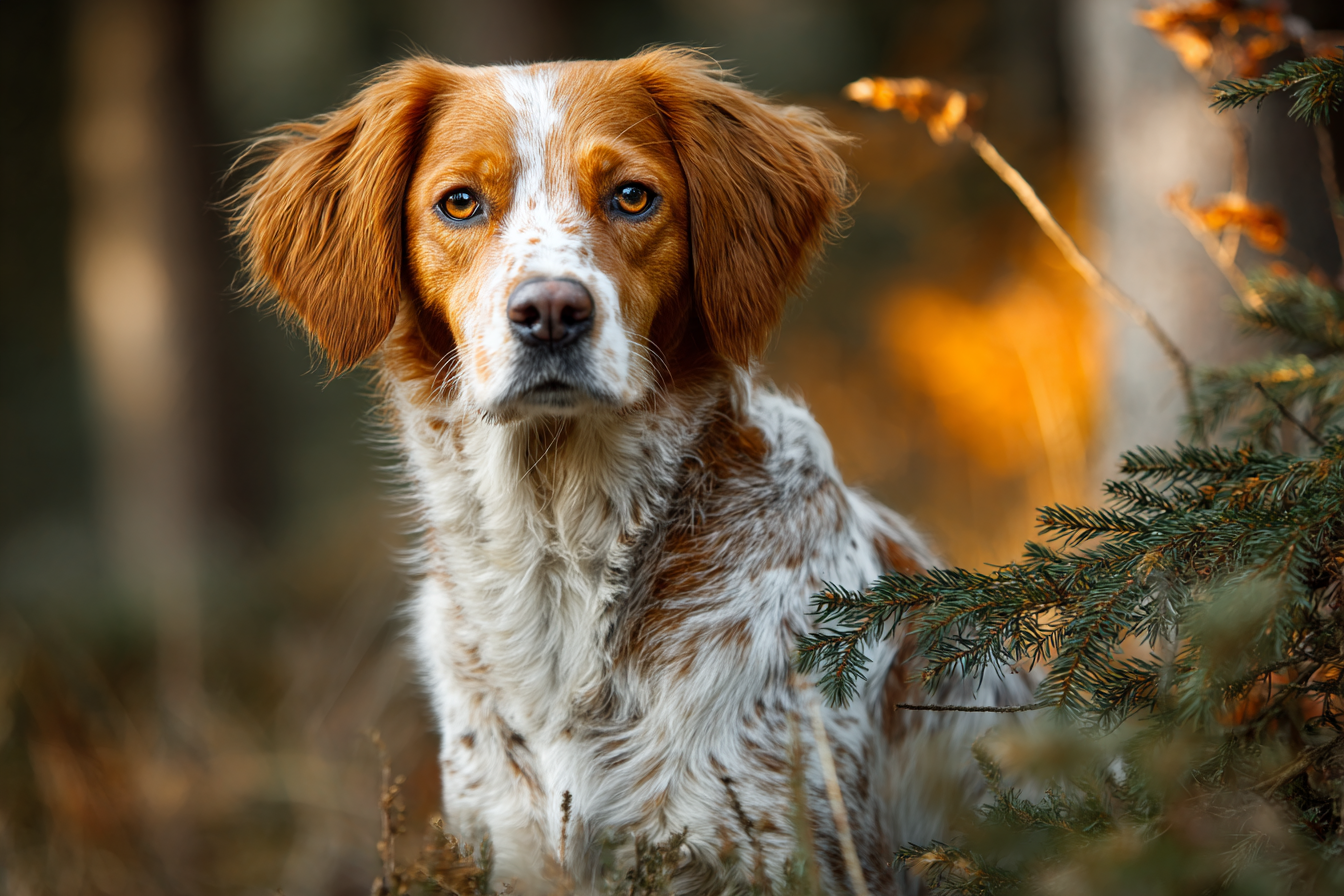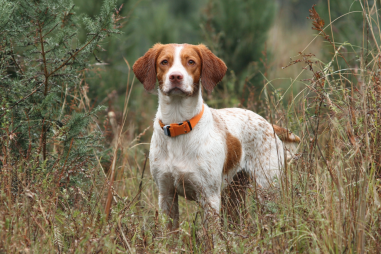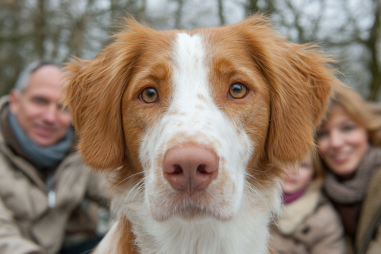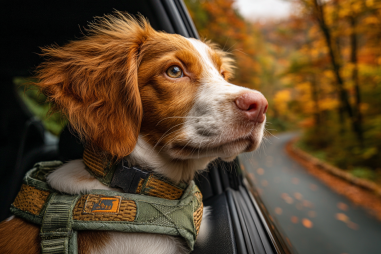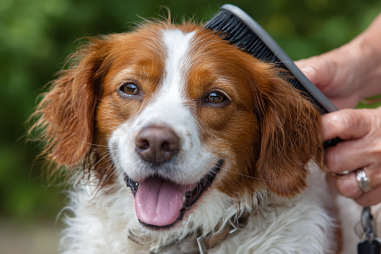The Brittany dog is a beloved breed known for its lively spirit, intelligence, and exceptional hunting abilities. This breed has captured the hearts of many dog enthusiasts and hunters alike, thanks to its rich history and versatile skills. Tracing the roots of the Brittany takes us back to the picturesque region of Brittany in northwestern France, where this breed evolved as a specialized hunting companion. Let’s embark on a journey through time to explore the fascinating history and origins of the Brittany dog, understanding how it grew into the breed we appreciate today.
Early Beginnings in Brittany, France
The Brittany dog’s story begins in the rugged and verdant landscapes of the Brittany region of France. This area, known for its dense forests, moors, and farmlands, provided an ideal environment for hunting game birds. The breed emerged as a versatile hunting dog, well-adapted to the varied terrain and climate of the region. Though the precise lineage is somewhat murky, the Brittany is believed to be descended from French spaniel and setter types, blended over centuries to produce a dog with exceptional scenting and retrieving abilities.
The earliest records of dogs matching the Brittany’s description date back to the 17th and 18th centuries, where descriptions in hunting journals and rural memoirs mention energetic, compact dogs with a keen nose and an eager temperament. Originally, these dogs were small to medium-sized, designed for the nimble and precise work required in close upland hunting. Their coat patterns, often orange and white or liver and white, were also noted for blending well with natural surroundings during hunts.
Evolution as a Hunting Dog
Throughout the 19th century, the Brittany underwent refinement to enhance its hunting capabilities. Hunters valued dogs that could point, flush, and retrieve game birds such as grouse, quail, and pheasants. The breed’s versatility made it an indispensable companion for various kinds of hunts—whether in dense woods, marshlands, or open fields.
During this period, breeders began to standardize the breed’s characteristics, focusing on its agility, stamina, and ease of training. The Brittany was not just a pointer like its setter cousins; it was a dynamic blend of pointer and retriever traits. This adaptability allowed it to mark the exact location of hidden birds with a distinctive point and retrieve them efficiently once shot. Its compact size, friendly demeanor, and cooperative spirit made it a favorite among both professional hunters and amateur sportsmen.
Role in Field Trials and Competitions
As organized field trials and hunting competitions became more popular in the late 19th and early 20th centuries, the Brittany’s reputation grew substantially. These events tested a dog’s endurance, skill, obedience, and hunting aptitude in simulated or real hunting scenarios, providing an ideal platform to showcase the breed’s strengths.
The Brittany excelled in these trials due to its natural hunting instincts combined with trainability. Clubs dedicated to pointing breeds began to recognize the breed officially, and specific standards were developed to promote the ideal Brittany dog. Success in these competitions not only boosted the breed’s prestige but also encouraged selective breeding practices to further hone desirable traits, such as a soft mouth for gentle retrieval and an enthusiastic yet focused working style.
Expansion Beyond France
While the Brittany originated in France, its qualities quickly caught the attention of hunting communities worldwide. By the early 20th century, the breed began to spread across Europe and to North America, where hunters welcomed this adaptable sporting dog with open arms.
In the United States, the Brittany was initially known as the Brittany Spaniel, but eventually, the “Spaniel” was dropped to better reflect its pointing and retrieving skills rather than just spaniel characteristics. The American Brittany Club was established in 1958, helping to preserve breed standards and promote health and performance. Breeders in the U.S. and Canada played an essential role in the development of two primary varieties within the breed: the American Brittany, which tends to be more energetic and somewhat taller, and the French Brittany, which is typically more compact and traditional in appearance.
This international expansion helped diversify the breed’s gene pool while preserving the core qualities that made the Brittany such an outstanding hunting dog. Today, Brittany dogs participate in hunting, obedience, agility, and even search-and-rescue work across the globe.
Modern-Day Brittany Breed Status
In modern times, the Brittany remains a top choice for hunters and outdoors enthusiasts due to its balance of energy, intelligence, and versatility. The breed is recognized by major kennel clubs worldwide, including the American Kennel Club (AKC) and the Fédération Cynologique Internationale (FCI).
While true to its hunting roots, the Brittany has also adapted well to family life. Thanks to their affectionate nature and moderate size, they thrive in active households where they receive ample exercise and mental stimulation. Brittanys are often praised for their easy-going temperament, making them excellent companions beyond the hunting field.
Health-wise, the breed is generally robust, with responsible breeders working to minimize genetic health issues. Training remains a key part of raising a happy and well-mannered Brittany, as their intelligence and eagerness to please benefit greatly from consistent positive reinforcement.
Cultural Significance
The Brittany dog holds a special place not only in the canine world but also in cultural history, particularly in France. The breed is deeply tied to rural traditions, symbolizing the harmony between man, nature, and sport. In Brittany, the dog has been a trusted partner for generations of hunters, helping communities sustain a way of life that respects wildlife and natural resources.
Moreover, the breed appears in regional folklore, art, and literature, often depicted as the quintessential hunting companion. Events and festivals celebrating Brittany dogs and their hunting heritage continue to attract enthusiasts who honor these traditions while promoting conservation and responsible hunting.
Internationally, the Brittany’s rise in popularity reflects broader trends valuing versatile, intelligent, and active dog breeds that excel in both work and companionship. Their cultural footprint continues to grow, uniting people around shared passions of outdoor adventure and respect for canine heritage.
From the wild landscapes of Brittany, France, to the present-day homes of devoted families and hunters, the Brittany dog’s history is as rich and dynamic as the breed itself. Its journey through centuries of evolution highlights not only its adaptability and skill but also its enduring bond with humans. For anyone interested in a dog with deep roots and a spirited personality, the Brittany stands out as a remarkable breed shaped by history, culture, and an unwavering love for the hunt.

